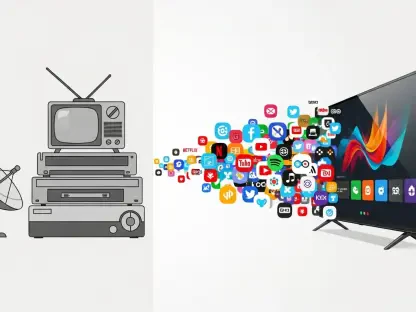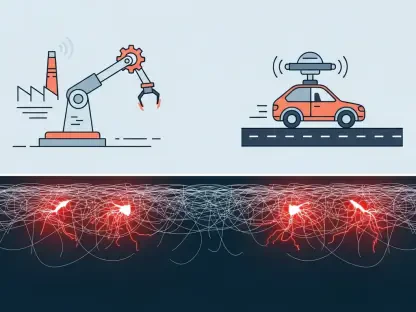In a world where seamless mobile connectivity underpins nearly every aspect of daily life—from remote work to smart cities—one telecommunications giant is rewriting the rules of network infrastructure. Vodafone, a powerhouse in Europe’s telecom landscape, is spearheading a transformation that could redefine how millions access the internet. With a groundbreaking push into open Radio Access Network (RAN) technology, this initiative promises not just faster, more reliable networks, but a fundamental shift in how telecom operates. What fuels this ambitious overhaul, and why does it matter to users across the continent?
Why Vodafone’s Network Shift Turns Heads Worldwide
Vodafone’s journey to modernize its infrastructure has captured the attention of industry leaders and tech enthusiasts alike. Through its flagship Spring 6 initiative, the company is embracing open RAN—a technology that allows for greater flexibility by using equipment from multiple vendors rather than a single supplier. This bold strategy positions Vodafone as a pioneer in breaking away from traditional, rigid network models, setting a precedent that could influence global telecom standards.
The significance of this move extends beyond technical innovation. By targeting 30% of its European network to operate on open RAN by 2030, Vodafone is addressing critical challenges like cost reduction and scalability. This shift is not just about keeping up with demand; it’s about anticipating the future needs of a hyper-connected society, making this endeavor a focal point for anyone invested in the evolution of digital infrastructure.
The Broader Impact of Open RAN on Telecom Dynamics
Open RAN represents a paradigm shift in telecommunications, challenging the long-standing reliance on proprietary systems from single vendors. This technology fosters interoperability, enabling operators like Vodafone to mix and match hardware and software from various suppliers. The result is a more competitive market, driving down costs while spurring innovation—a win for both companies and consumers hungry for better services.
Vodafone’s adoption of this approach aligns with an industry-wide trend toward vendor diversity. Studies indicate that open RAN could reduce network deployment costs by up to 40%, according to industry analysts, offering a compelling economic incentive. More importantly, this flexibility ensures networks can adapt quickly to emerging technologies, a crucial factor as 5G and beyond become integral to everyday connectivity.
This strategy also addresses geopolitical concerns by reducing dependency on any single supplier, a growing priority in today’s complex global landscape. By championing open RAN, Vodafone is not merely upgrading its systems but contributing to a more resilient and inclusive telecom ecosystem across Europe.
Inside Spring 6: Vodafone’s Blueprint for Modern Networks
At the heart of Vodafone’s transformation lies the Spring 6 initiative, a multi-year plan to overhaul network infrastructure across Europe and parts of Africa. This project brings together major industry players—Ericsson, Nokia, Samsung, and Huawei—each tasked with specific roles in different markets. Despite adjustments due to divestitures in regions like Italy and Spain, the initiative remains a cornerstone of Vodafone’s vision for a future-proof network.
Germany stands out as a flagship market, with Samsung leading one of the largest open RAN deployments in Europe. Thousands of sites are being equipped, with an operational hub already active in Hannover and full coverage planned for Wismar by early 2026. Meanwhile, Ericsson dominates in Ireland, the Netherlands, and Portugal, and is set to introduce AI-driven automation tools in Germany within the next year, enhancing efficiency and multi-vendor coordination.
Other partners play vital roles as well. Nokia continues to support key investments across Europe and Africa, including a significant presence in the U.K. alongside Ericsson for the VodafoneThree project. Huawei’s involvement, though less detailed in public announcements, confirms its ongoing relevance in Vodafone’s ecosystem, illustrating the intricate balance of partnerships driving this modernization effort.
Industry Voices Weigh in on Open RAN’s Promise
Insights from Vodafone and its collaborators reveal a shared optimism about open RAN’s potential to transform telecommunications. In major markets like Germany, vendor announcements highlight the technology’s capacity to deliver scalable, innovative solutions. Samsung, for instance, emphasizes its alliances with Dell Technologies, Intel, and Wind River, showcasing how collaborative efforts underpin the success of these deployments.
Ericsson’s perspective adds another layer of confidence, with its five-year partnership focusing on AI-powered automation and energy efficiency. Statements from the company underscore how programmable solutions can optimize networks across diverse environments, a critical advantage in managing multi-vendor setups. This forward-thinking approach signals a belief in open RAN as a sustainable model for the future.
Yet, not all aspects are fully transparent. Details such as exact site numbers or financial commitments remain undisclosed, with Vodafone only noting “thousands” of sites in play. This cautious stance reflects broader industry challenges in balancing competitive sensitivity with public accountability, tempering enthusiasm with a dose of pragmatism.
What This Means for Everyday Connectivity
For the average user, Vodafone’s open RAN strategy translates into tangible benefits over time. The multi-vendor flexibility inherent in this technology could lead to more reliable mobile services and potentially lower costs as competition drives innovation. Businesses and individuals in Europe might soon notice improved coverage, especially in rollout hotspots like Germany, where deployments are already underway.
Understanding the impact starts with awareness of local progress. Monitoring service enhancements in key markets offers a glimpse into how these changes unfold. As Vodafone progresses toward its 2030 goal, the ripple effects could include faster adoption of digital services, from smart home solutions to enterprise applications, directly tied to enhanced network performance.
The broader implication is a more dynamic telecom landscape. Consumers and companies alike stand to gain from networks that evolve with technological advancements, ensuring connectivity keeps pace with demand. Staying informed about these developments equips users to anticipate and leverage the next wave of digital transformation sweeping across the region.
Reflecting on a Connectivity Milestone
Looking back, Vodafone’s bold embrace of open RAN through the Spring 6 initiative marked a defining moment in Europe’s telecom history. It showcased how strategic partnerships with industry giants like Ericsson, Nokia, and Samsung could drive innovation while navigating complex challenges like market divestitures and project delays. This journey underscored the power of adaptability in reshaping infrastructure for millions.
As the landscape continued to evolve, the focus shifted to actionable outcomes. Stakeholders were encouraged to track regional rollouts and advocate for policies that support open, interoperable networks. The path ahead promised further collaboration and technological breakthroughs, ensuring that the foundation laid by Vodafone would inspire a more connected, resilient future for all.









